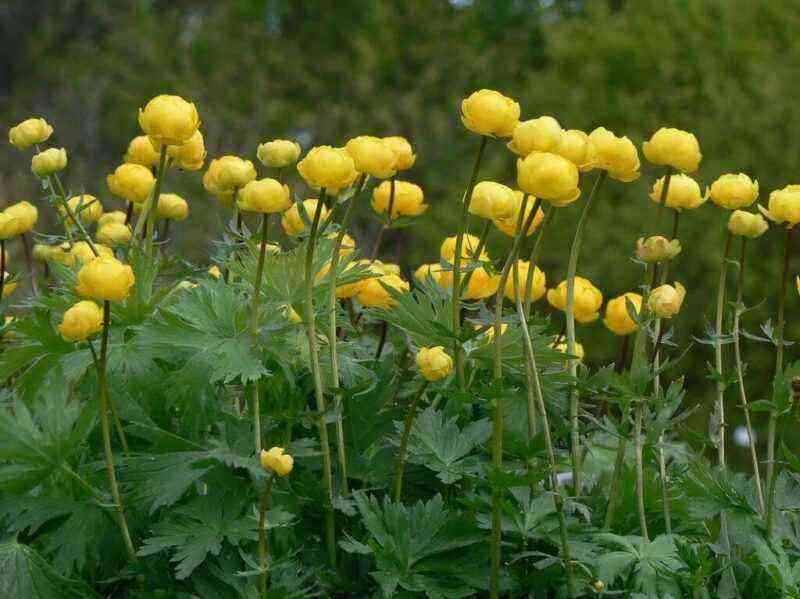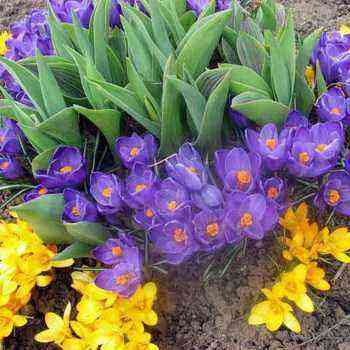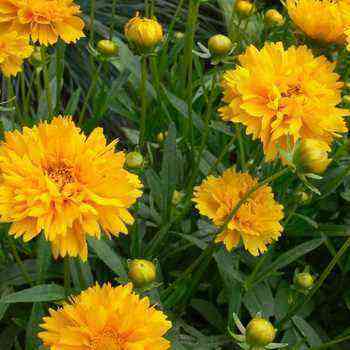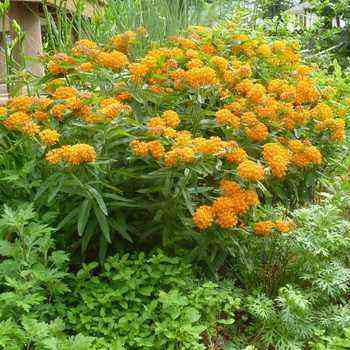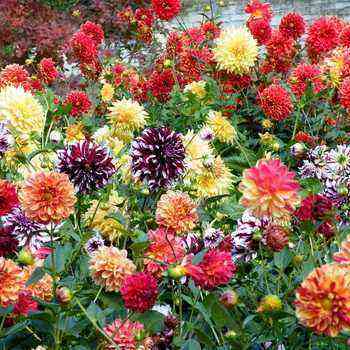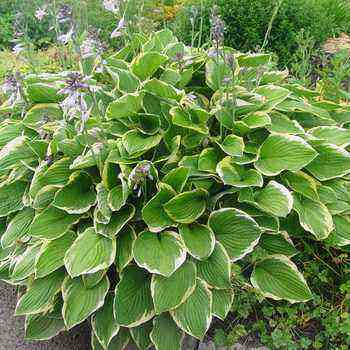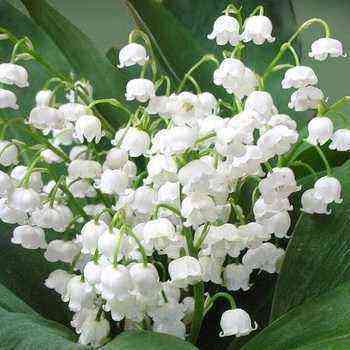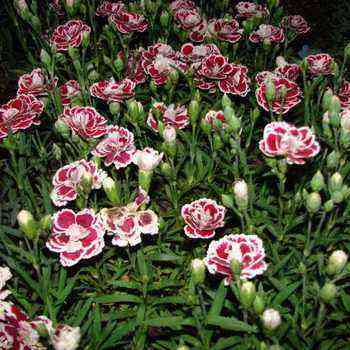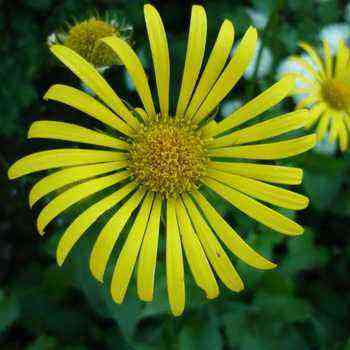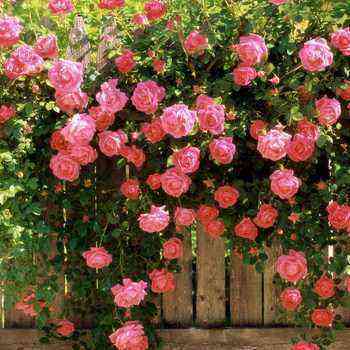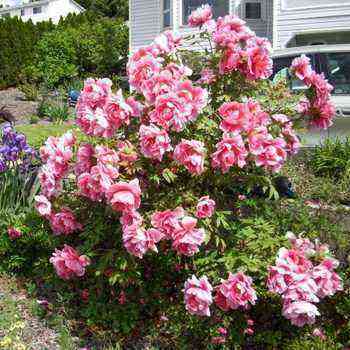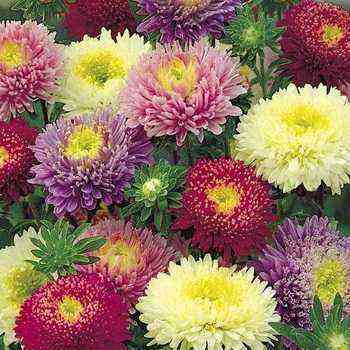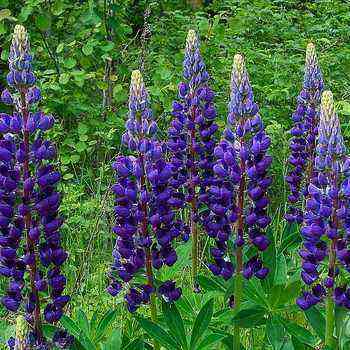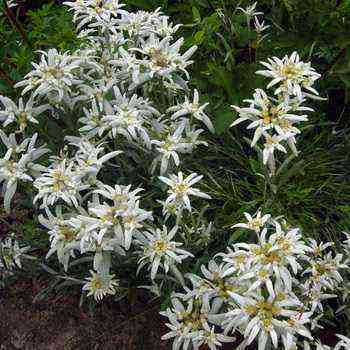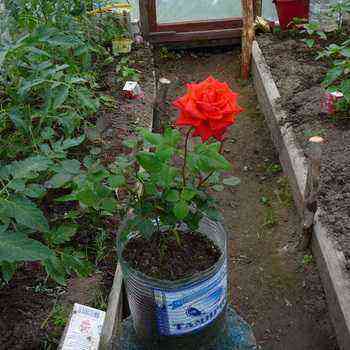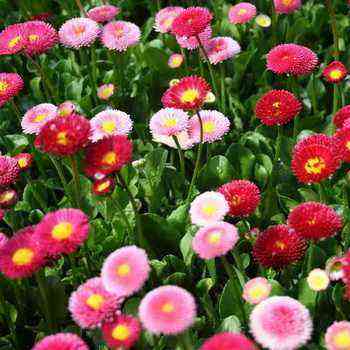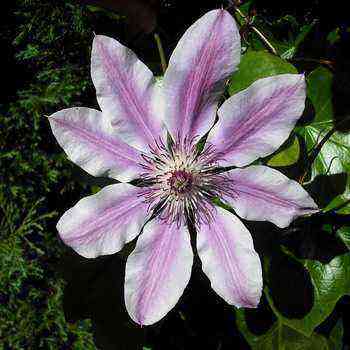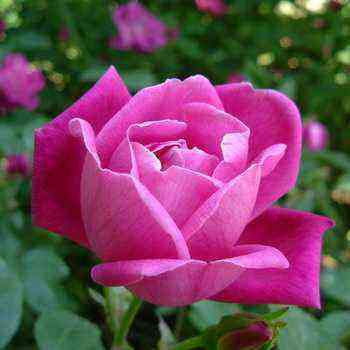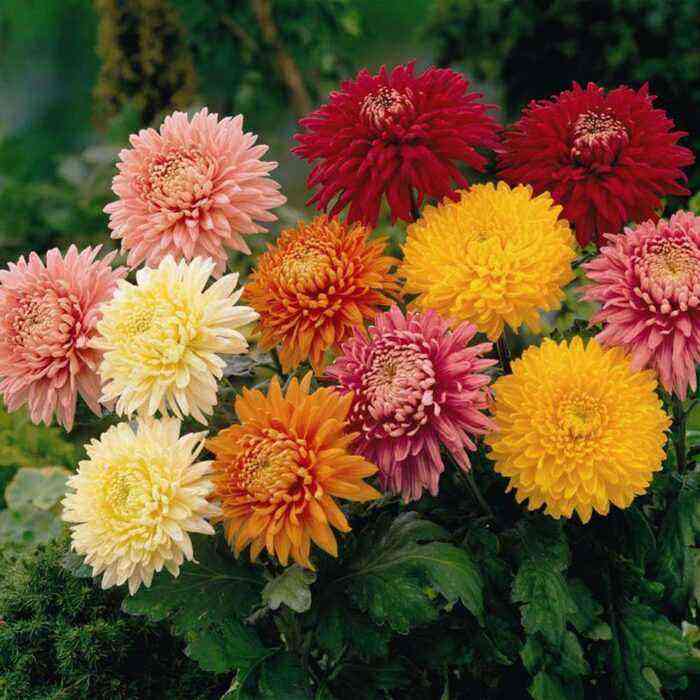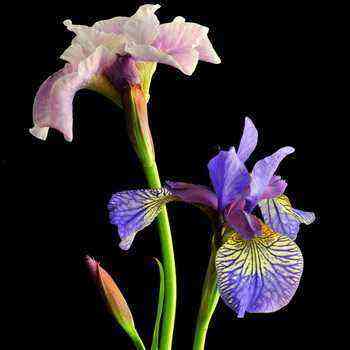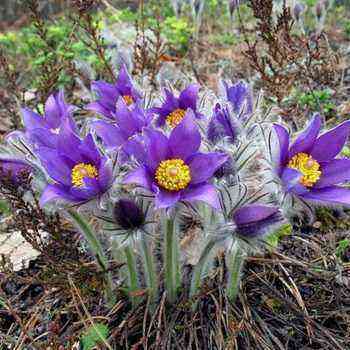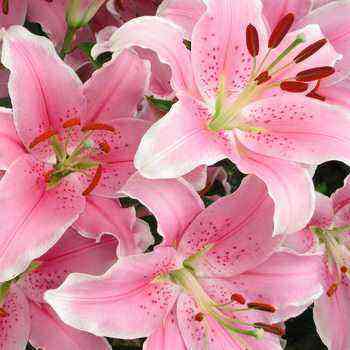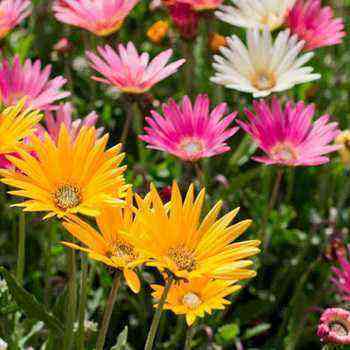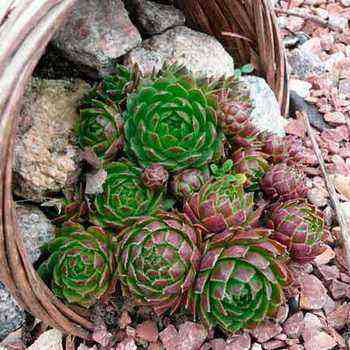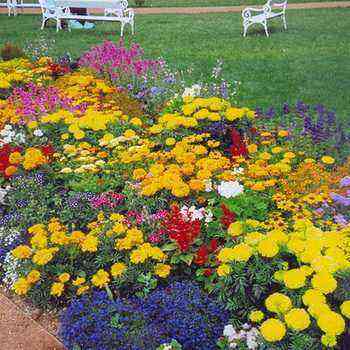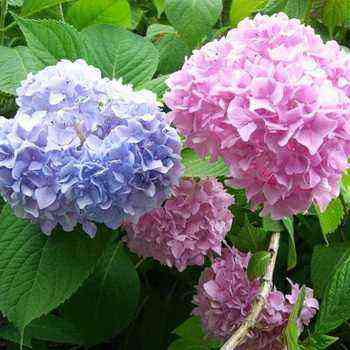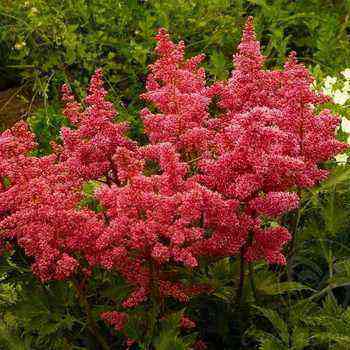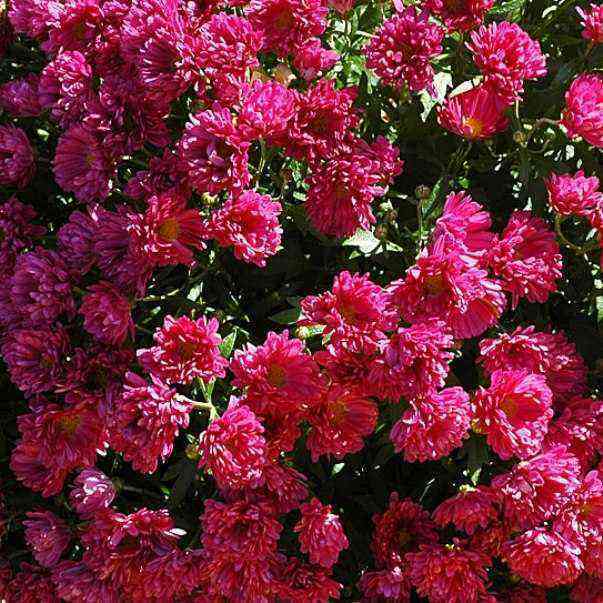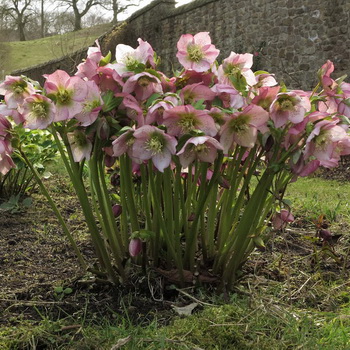 There are many legends and tales about this amazing flower: some say that the plant is able to protect against evil spirits and diseases, while others say about its divine origin. This is probably why in Europe so many skilled gardeners are happy to plant this herbaceous perennial, and in Germany it is considered a traditional gift for Christmas.
There are many legends and tales about this amazing flower: some say that the plant is able to protect against evil spirits and diseases, while others say about its divine origin. This is probably why in Europe so many skilled gardeners are happy to plant this herbaceous perennial, and in Germany it is considered a traditional gift for Christmas.
Everyone wants to buy a garden unpretentious hellebore flower (Helleborus), they regularly buy terry varieties of different colors in the markets, and plants with simple greenish-white buds grow in the garden.
Why are sellers engaged in falsification? Mainly due to the difficulty of reproduction of bright terry hellebore varieties. After all, such plants propagate only vegetatively, and they cost a lot of money. Tell me, how can a buyer not be tempted when they offer a “chic varietal hellebore” for almost nothing?
The plant got its name “hellebore” due to its amazing qualities – it is not afraid of frost at all. Peduncles develop right under the snow, and when the oppression weakens, they get out. So they stick out of the snow among the leaves of last year that have preserved the greenery.
To give the most accurate description of the hellebore garden flower, it is necessary to start with the fact that it is a herbaceous perennial plant, the height of which rarely reaches more than 50 cm.It is characterized by a short rhizome, a stem without lateral branches, leathery foliage and cupped flowers of extraordinary beauty. The winter garden is distinguished by the fact that its riot of colors combines soft cream, purple, deep black, canary and purple undertones. Different types of hellebore can have simple or double-edged buds.
From mid-April to the end of May, hellebores are pleasing to the eye. So long for spring flowers. How do they do it? Strictly speaking, what we take for petals are overgrown sepals. This is what prolongs the period of decorativeness, because even after setting and shedding seeds, sepals remain on the plant, turning pale, but retaining the illusion of flowering.
Not only early flowering makes the winter house a truly extraordinary treasure for every landscape design: features such as drought resistance and endurance make it possible to plant it in almost any soil and climatic conditions. However, it should be remembered that a seemingly harmless perennial is fraught with surprises: it, like all representatives of the Buttercup family, is very poisonous.
How to plant a hellebore on the site
Hellebores are wonderful hardy plants that can be planted and forgotten for many years. They can’t bear except the swamps. From year to year, they only become more beautiful, the bush is more powerful, the flowers are more numerous. Hellebore leaves winter, but in spring they quickly lose their decorative effect. Best of all, after winter, such a type of hellebore as black and its varieties is preserved.
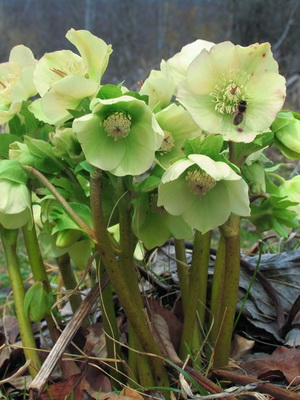
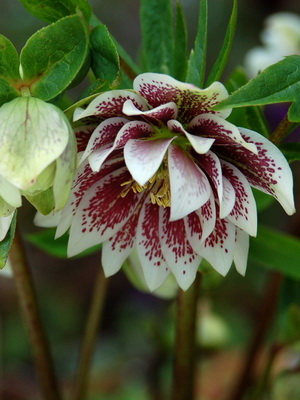
It should be noted that on one site, a “Christmas rose” can grow safely for a whole decade, and that is why the choice of a place for planting it must be approached wisely. If you take this process lightly, then you need to be prepared for the fact that a transplant, which this plant does not like very much, will negatively affect the health of the herbaceous pet.
Despite the fact that the planting of a cold-resistant hellebore flower can be carried out in any climatic conditions, gardeners recommend giving preference to such soil as drained clay, which will be sufficiently moist and loose. It is also necessary to pay attention to the fact that there is no need to be afraid to plant a perennial near other bushes and trees. In a well-equipped garden, the hellebore feels great next to ferns, corydalis, crocuses.
Hellebores are often sold in early spring, or even in February. Saplings are roots embedded in peat. It is difficult to preserve them: the roots, which do not work yet, are prone to rot. They must be planted as soon as possible in pots with very poor loose soil (peat in half with coarse sand) and kept in a cool place almost dry. You need to water little by little into the pallet or around the perimeter of the pot. They are planted as soon as the snow melts (to be sure, cover the plant with lutrasil).
It is important to know that planting in open ground and further care for the hellebore will be successful only if the gardener has chosen for this plant species such as black, smelly, oriental or Caucasian wintering.
You need to warn yourself against buying hellebores with bare roots. Such plants are sold on garden ruins. Weakened plants are unlikely to survive. In addition, the planting material is most likely of dubious origin.
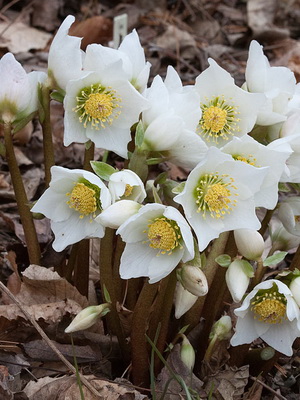
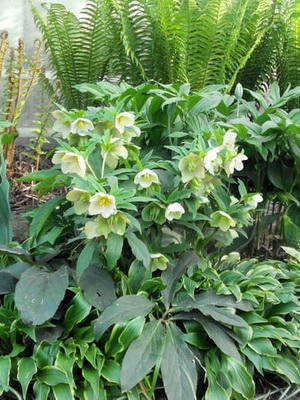
Pay attention to the photo of the correct planting and further care of the hellebore: in addition to the fact that the pits for the seedlings must be made of small sizes – about 30x30x30 – they should be dug at a distance of at least 30 cm from each other, so that in the future, the care of the plants will pass safely and be easy. Novice gardeners should also take into account the fact that the dug holes must be filled with compost halfway. Note: the process of planting the “Christmas rose” is best done in April or early September. After the hellebore is planted, it is necessary to take care of its care – we are talking about watering (abundant and frequent in the first three weeks), mulching, weeding and protection from pests and diseases.
How to grow hellebore and how to propagate this garden flower
Look carefully at the photo of the hellebore garden flower: if you take a responsible approach not only to the process of placing the plant in the garden, but also to further care for it, the winter house will give a magnificent color every year:
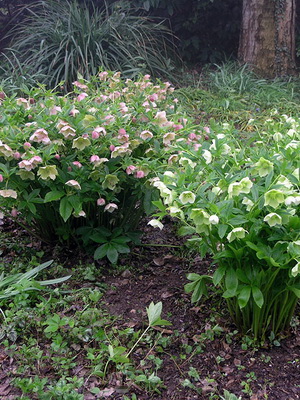
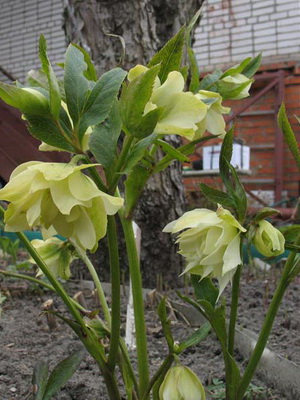
- Caring for a perennial is not difficult and difficult to accomplish.
- First of all, in early spring, when the buds are about to begin to appear, you just need to remove the dried old foliage so that it does not become a hotbed of infection and fungal spotting for new shoots and shoots.
- Secondly, after the flowering stops and withers, it is imperative to mulch the ground around the seedlings with compost or peat.
- Thirdly, in the summer, it is necessary to regularly water the winter house and carefully weed and loosen the area where it grows.
- Experienced gardeners also advise not only to take seriously the planting and further care of hellebore flowers, but also to feeding it, which should be carried out at least 2 times per season. Usually, bone meal or mineral fertilizers are used for this.
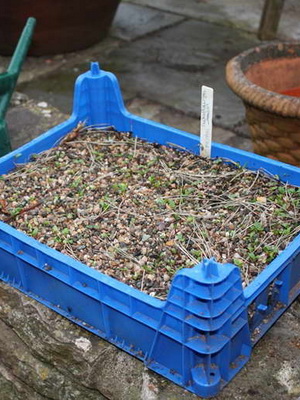
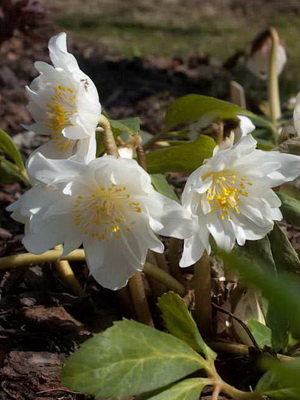
It is possible to propagate hellebores by seeds, but it is not so easy. If you sow fresh seeds, they will sprout in the spring, dry ones will need two periods of stratification, that is, two winters. And you will have to wait 3-4 years for flowering.
However, those who decide on this method of breeding should know a few useful tips. One of them concerns the fact that the seeds of the plant must be sown immediately after they are ripe and harvested – that is, around the end of June. You also need to understand how to properly plant a hellebore using seedlings: in particular, the material is placed in loose and well-moistened soil to a depth of at least one and a half centimeters. Seedlings can be observed next year, in March. Only after the sprouts have several leaves can they be moved to the flower bed, where they should be for another two years.


Pay attention to the photo of the hellebore garden flower, the description of which was presented above: this plant was born not using the seed method of reproduction, but thanks to the division of the bush. This technique involves digging out five-year-old wintering houses, dividing their root system into parts and replanting in new places. It should be noted that in this way in the spring you can breed a species called black, and in the fall – an oriental one.
Care when growing hellebore: combating pests and flower diseases
Pay attention to the photo of hellebore flowers: after planting as part of plant care, in order to get such a lush flowering, protection from numerous threats is imperative.
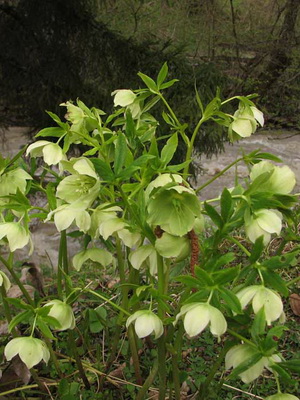
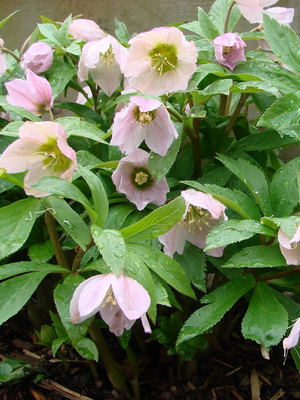
One of the terrible enemies of the “Christmas rose” is aphids, and slugs, which like to eat leaves, caterpillars and mice, also cause a lot of trouble. Rodent pest control is carried out using baits with poisoned food, but slugs will have to be collected by hand. In addition, other pests will need to be destroyed using insecticides – for example, actellic and biotlin.
When caring for a hardy hellebore flower, special attention should be paid to all kinds of diseases of this plant. Ring spot and anthracnose bring a lot of harm to perennials and upset to true gardeners. However, experts try not to despair, and fight necrosis – spotting – by removing and burning the damaged parts of the winter house. Anthracnose, which manifests itself in the form of dark brown spots, is treated with preparations that necessarily contain copper.
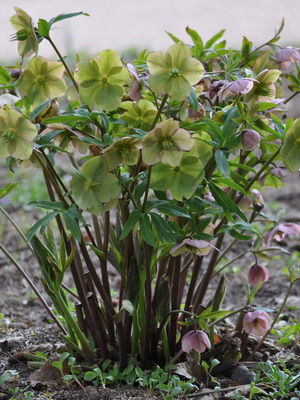
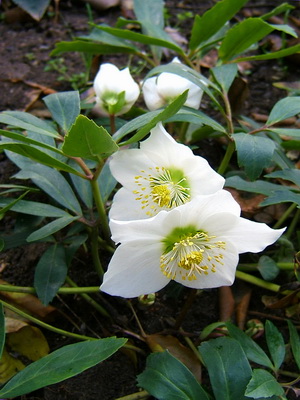
If the cultivation and care of hellebore flowers is approached responsibly, then the plant is distinguished by colossal endurance and resistance to such diseases and pest attacks. However, when a novice gardener does not follow the basic rules – for example, planting a “Christmas rose” in soil with high acidity – the winter house becomes vulnerable, as a result of which it begins to hurt.
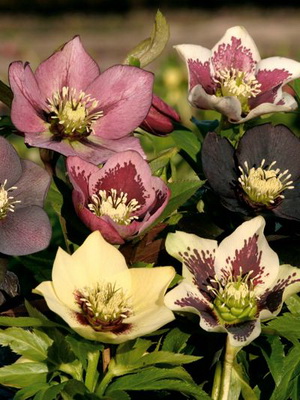
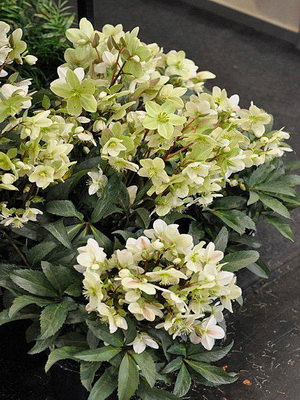
That is why experienced craftsmen advise beginners, before starting to grow a hellebore, to make sure that the chosen area is suitable for a flower. To do this, you need to take a sample of the soil – a teaspoon will be enough – pour the soil onto the glass and carefully pour over the vinegar. In the event that a lot of foam appears, it means that there is an excess of potassium salts in the soil, the average amount of white flakes indicates neutral acidity of the soil, but the absence of foaming indicates that it is time to fertilize the site with dolomite flour or wood ash
Wintering for planting in the garden: features of species and varieties (with photo)
Quite a few species and varieties are suitable for growing in central Russia.
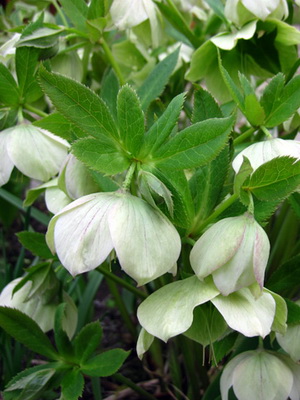
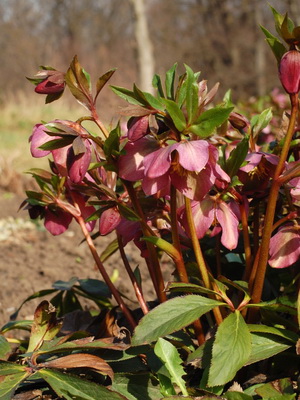
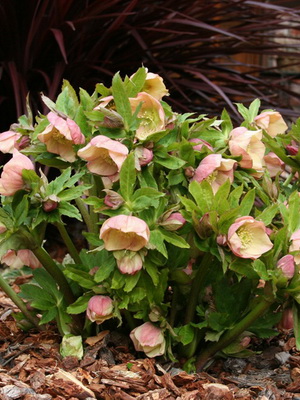

It black hellebores ( El.niger ) with white flowers, reddish (H. purpurascens) with reddish-green flowers, Oriental (N. orientalis) with purple flowers, Caucasian (N. caucasicus) , having greenish-white flowers with purple speckled in the center, Abkhazian (El. abchasicus) – wine red, the brightest of the species. All these plants are winter-hardy and reliable, live a long time and do not require any care, except for mulching with foliage.
To know how to grow different types of hellebore, it is necessary to study in more detail information about their natural growing environment, features and existing varieties.
For example, the so-called black wintering house is considered one of the most popular among gardeners. The thing is that the plant is distinguished by large pale pink flowers, the core of which is striking in its snow-whiteness. This variety blooms for no more than two weeks – in early April. However, its amazing winter hardiness – perennial can withstand -35 ºC – compensates for such a short period of riot of colors. Pay attention to the photo with the varieties of black hellebore: Potters Will has the largest snow-white buds of all brethren, and Pracox begins to bloom in November.
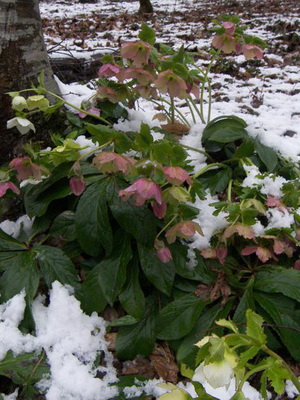
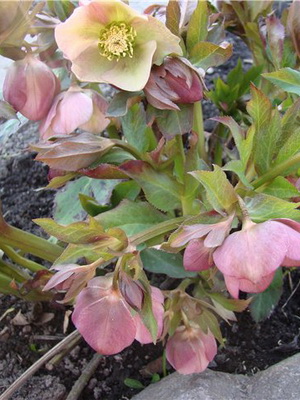
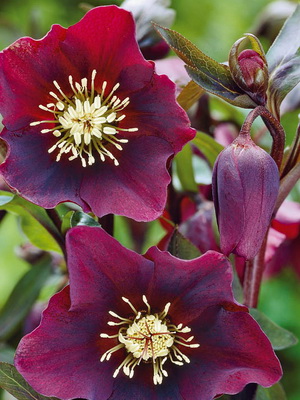
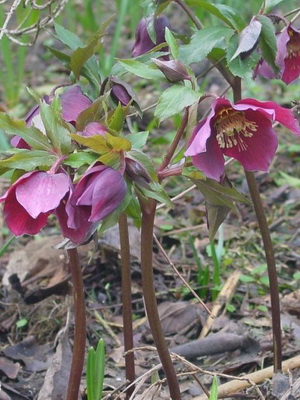
The reddish wintering house adorns any garden for a whole month – April – with rich purple buds. It began to be cultivated two centuries ago.
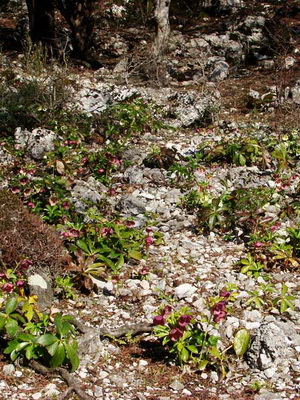

Look at the photo of such species of hellebore as Eastern and Abkhazian: the first is distinguished by exquisite purple flowers, and the second is bright red. It should be noted that the eastern wintering house is very often subject to fungal infections. But the Abkhazian “Christmas rose” is attractive because it has different varieties.
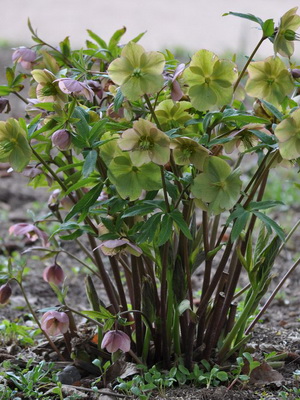

The Caucasian hellebore is also found in landscape design: it becomes covered with yellowish-green buds at the end of April and lasts for several weeks. However, you need to pay attention to the fact that this particular species is considered to be the most poisonous.
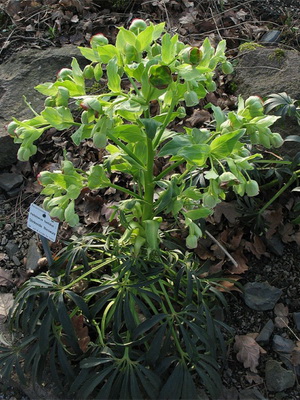
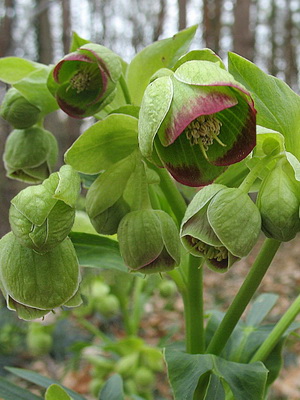
You can grow our stinking hellebore (H. foetidus) , but you have to tinker with it: in order for it to bloom, it is necessary to preserve the aerial part in winter, since inflorescences appear only on overwintered shoots. For this, the plant has to be covered with spruce branches, fallen leaves or lutrasil.

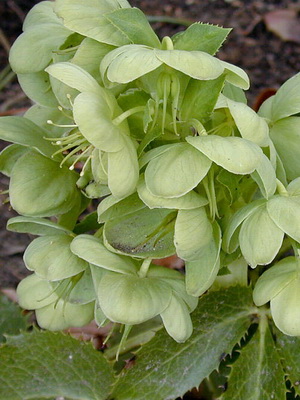
The perennial, called the Corsican, is distinguished by yellow-green buds that adorn the plant from the beginning of April. This “Christmas rose” needs to be covered for the winter.

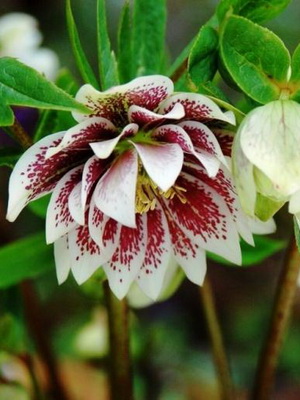
A particularly fashionable caste is hybrid hellebores. Usually these are varieties bred on the basis of the eastern hellebore, for which the group received the name “oriental hybrids”. The flowers are painted in a variety of bright colors, there are also double forms. Plants do well in our climate.
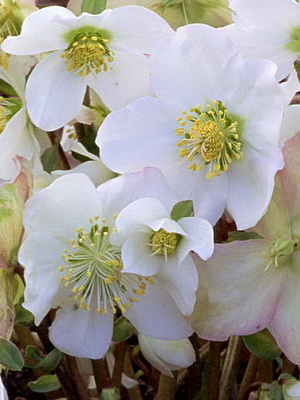


The most famous and popular are the following “garden favorites”: “Violetta”, which is characterized by fluffy pale white buds, “Queen of the Night” with deep purple flowers and “Belinda”, striking a double bouquet of light green-pink hue.
Hellebore plant in landscape design (with photo)
Take a close look at the photo of hellebore flowers in the garden: they look most organically under the canopy of trees. Bulbous ones are good with them – woodlands, crocuses, crested beetles, kandyks. Primroses, anemone, cristworms, violets, horned goats are also suitable.
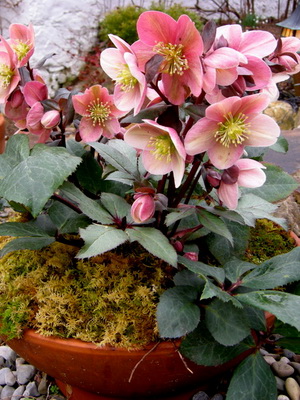
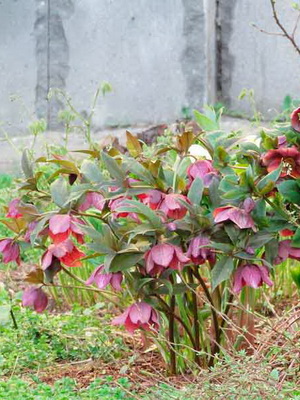
In a summer composition, a combination with ferns, hosts, geyhers will be beautiful. When planting a young plant, do not forget that in a year or two it will turn into a decent bush.
In addition, a hellebore can be planted in the garden if the owner of the site wants to create a real shady alpine slide. In addition, large ornamental shrubs are ideal for arranging a variety of curtains – garden and park ensembles.
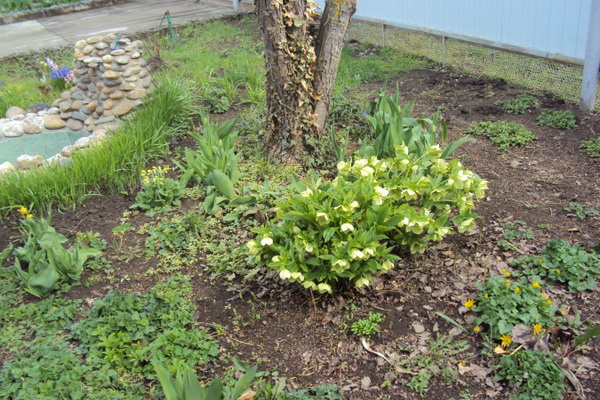
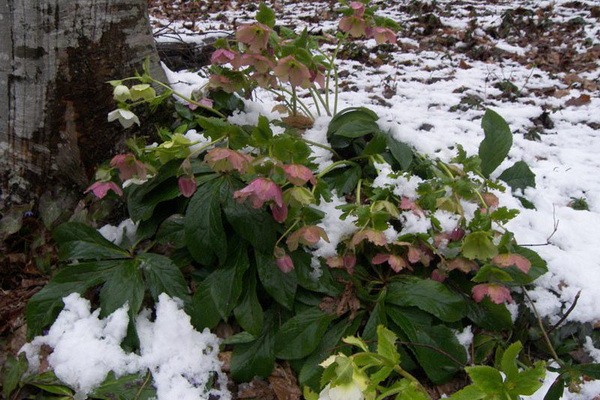
Pay special attention to the photo of a blooming hellebore in landscape design: it really looks great and complements the picture of a riot of colors.
However, remember that it is better not to grow hellebore flowers at home in places easily accessible to children, because this unique perennial cannot be called harmless – that is, non-toxic.
